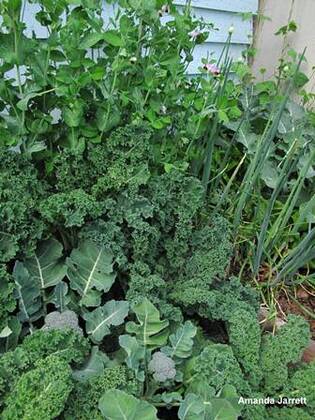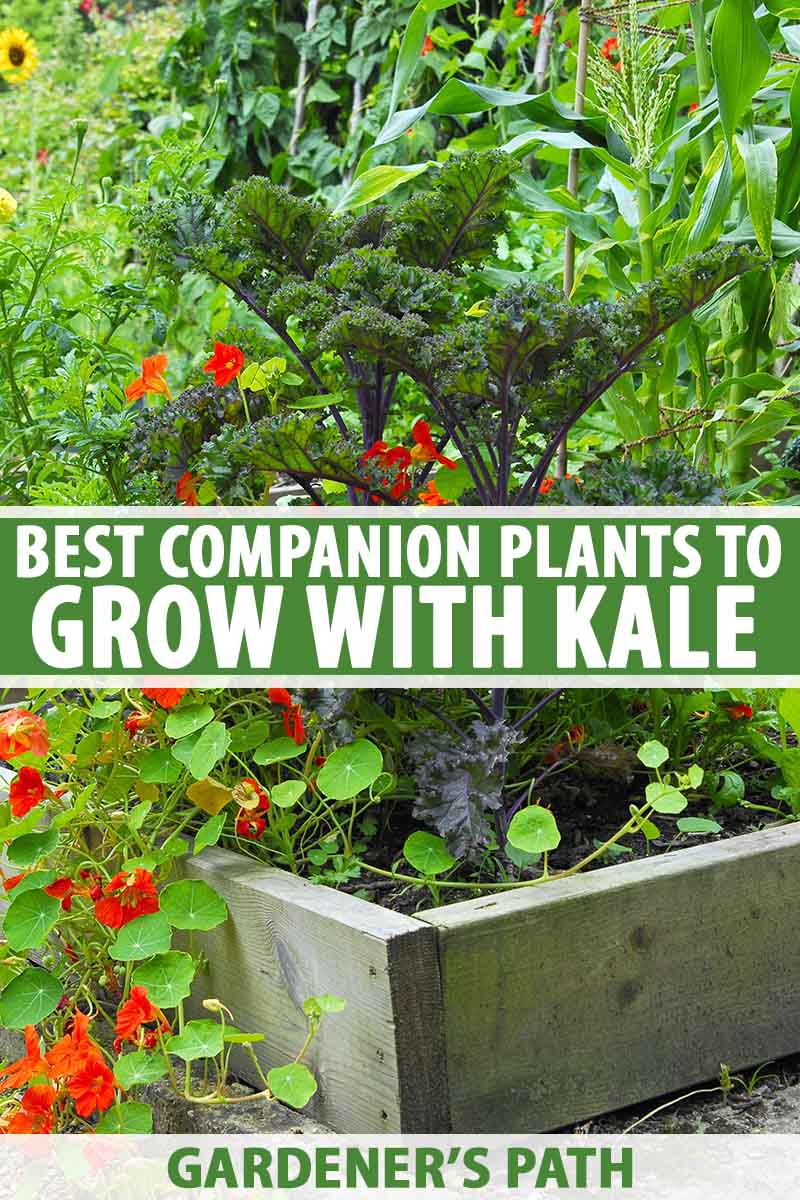Curly Kale Companion Planting: The Ultimate Guide To Growing Healthy Pestfree Kale
Curly Kale Companion Planting: The Ultimate Guide to Growing Healthy Pest-Free Kale
Kale is a versatile and delicious vegetable that can be enjoyed in a variety of ways. It's also a relatively easy crop to grow, but there are a few things you can do to help ensure a healthy harvest. One of the best ways to do this is to practice companion planting.
Companion planting is the practice of planting certain types of plants together in order to benefit each other. Some plants, for example, can help to deter pests, while others can help to improve the soil quality. By planting kale with the right companion plants, you can help to boost its growth and protect it from pests and diseases.
In this blog post, we'll take a look at some of the best companion plants for curly kale. We'll also discuss the benefits of companion planting and how to get started.
Benefits of Companion Planting
There are many benefits to companion planting, including:
- Increased crop yields: Companion plants can help to attract beneficial insects, which can pollinate your crops and help to control pests. They can also help to improve soil quality, which can lead to healthier plants and higher yields.
- Reduced pest and disease problems: Some companion plants can help to deter pests and diseases, which can save you time and money on pest control.
- Enhanced flavor: Some companion plants can actually improve the flavor of your crops. For example, planting basil near tomatoes can help to enhance their sweetness.
- Increased biodiversity: Companion planting can help to increase the biodiversity in your garden, which can make it more attractive to beneficial insects and other wildlife.
Best Companion Plants for Curly Kale
There are many different companion plants that can benefit curly kale. Some of the best options include:
- Allium plants, such as onions, garlic, and chives, can help to deter pests such as aphids, cabbage loopers, and flea beetles.
- Beans are nitrogen-fixing plants, which means they can help to improve the nitrogen content of the soil. This can benefit curly kale, as it is a heavy feeder.
- Cucumbers can help to attract beneficial insects, such as ladybugs and lacewings, which can help to control pests.
- Herbs such as dill, mint, and rosemary can help to repel pests and improve the flavor of curly kale.
- Marigolds are another great option for companion planting with curly kale. They can help to repel pests and attract beneficial insects.
- Spinach is a cool-season crop that can be planted alongside curly kale in the spring or fall. It can help to suppress weeds and improve the soil quality.
How to Get Started with Companion Planting
If you're interested in trying companion planting with curly kale, there are a few things you need to do:
- Do your research. Before you start planting, it's important to do some research and find out which companion plants are best for curly kale. There are many resources available online and in gardening books.
- Plan your garden layout. Once you know which companion plants you want to use, you need to plan your garden layout. Make sure to plant your companion plants in a way that will benefit each other. For example, you might want to plant allium plants near your kale to deter pests.
- Water and fertilize regularly. Just like any other crop, curly kale needs regular watering and fertilizing. Be sure to follow the instructions on the fertilizer label.
- Monitor your plants for pests and diseases. Even if you've chosen the right companion plants, it's still important to monitor your kale for pests and diseases. If you see any problems, take action immediately.
Conclusion
Companion planting is a great way to boost the growth of your curly kale and protect it from pests and diseases. By following the tips in this blog post, you can get started with companion planting and enjoy a healthy harvest of curly kale.
Curly kale is a versatile and delicious vegetable that can be enjoyed in many different ways. It's also relatively easy to grow, but there are a few things you can do to help ensure a successful harvest. One of these things is to plant curly kale with the right companion plants.
There are a number of vegetables and herbs that make good companion plants for curly kale. Some of the best include:
- Alliums: Alliums, such as onions, garlic, and chives, help to deter pests from curly kale.
- Beans: Beans are nitrogen-fixing plants, which means they can help to improve the soil quality around your curly kale.
- Cucumbers: Cucumbers help to attract beneficial insects, such as ladybugs, which can help to control pests.
- Herbs: A variety of herbs, such as dill, mint, and rosemary, can help to deter pests and attract beneficial insects.
For more information about companion planting with curly kale, please visit Gardenia Inspiration. This website has a wealth of information on the topic, including a list of recommended companion plants, tips on how to plant them together, and information on the benefits of companion planting.
FAQ of curly kale companion planting
Q: What are some good companion plants for curly kale?
A: There are many good companion plants for curly kale, but some of the best include:
- Alliums: Alliums, such as garlic, onions, and chives, can help to deter pests from kale. They also release sulfur compounds that can improve the flavor of kale.
- Beans: Beans are nitrogen-fixing plants, which means they can add nitrogen to the soil. This can benefit kale, which is a heavy feeder.
- Cilantro: Cilantro attracts beneficial insects, such as hoverflies, that prey on pests that can damage kale.
- Marigolds: Marigolds also attract beneficial insects, and their strong scent can help to deter pests.
- Nasturtiums: Nasturtiums are another good choice for companion planting with kale. They attract beneficial insects and can help to deter pests.
Q: What are some plants that should not be planted near curly kale?
A: Some plants that should not be planted near curly kale include:
- Broccoli: Broccoli and kale are both members of the brassica family, and they can attract the same pests.
- Cabbage: Cabbage is another brassica that should not be planted near kale.
- Peas: Peas can compete with kale for nitrogen.
- Spinach: Spinach can also compete with kale for nitrogen.
- Tomatoes: Tomatoes can attract pests that can damage kale.
Q: How far apart should curly kale plants be planted?
A: The spacing of curly kale plants will depend on the variety of kale you are growing. In general, however, you should space kale plants 12-18 inches apart. This will give them enough room to grow and prevent them from competing for resources.
Q: When should I plant curly kale?
A: Kale can be planted in the spring or fall. In the spring, plant kale after the last frost. In the fall, plant kale 6-8 weeks before the first frost.
Q: How do I care for curly kale?
A: Curly kale is a relatively low-maintenance plant. However, there are a few things you can do to help it thrive:
- Water kale regularly, especially during hot weather.
- Fertilize kale every few weeks with a balanced fertilizer.
- Mulch around kale plants to help retain moisture and suppress weeds.
- Protect kale plants from pests and diseases.
Image of curly kale companion planting
- Image 1: A bed of curly kale with tomatoes, basil, and marigolds. The tomatoes provide support for the kale, the basil deters pests, and the marigolds attract beneficial insects.

- Image 2: A row of curly kale with carrots and lettuce. The carrots help to improve the soil quality, the lettuce provides shade for the kale, and both plants repel pests.

- Image 3: A patch of curly kale with chives, onions, and garlic. The alliums help to repel pests, and the chives can also be used as a garnish for the kale.

- Image 4: A bed of curly kale with beans and peas. The beans and peas fix nitrogen in the soil, which benefits the kale.

- Image 5: A pot of curly kale with nasturtiums. The nasturtiums attract beneficial insects that help to control pests.

Post a Comment for "Curly Kale Companion Planting: The Ultimate Guide To Growing Healthy Pestfree Kale"